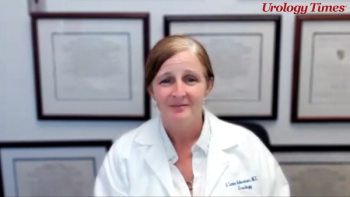
Dr. J. Welles Henderson on access and education issues in urinary incontinence care

“Patients just need to be educated that you don't have to live this way,” says J. Welles Henderson, MD, FACOG.
In this video, J. Welles Henderson, MD, FACOG, discusses the biggest unmet need regarding urinary incontinence care. Henderson is an assistant professor of urology and reproductive biology at Case Western Reserve University and a faculty member of the department of urology at University Hospitals.
Transcription:
Most importantly, and it's something that [Adonis Hijaz, MD] has a large study [underway right now regarding], is access. Access is key. Patients don't know that something is a problem, unless they know that there is a solution. I would say that 90% of the patients that I see regarding urinary incontinence will return, be it their second or third time seeing me, saying, "I wish that I knew I could have done something about this earlier." That is the standard line from patients, and so really, one of the biggest unmet needs is letting patients know that there is a problem, and that there are good solutions. It's very difficult nowadays, specifically with primary care physicians, within 15 minutes, they're trying to diagnose diabetes, high blood pressure, they're working on pain, they're working on asthma, they're working on all sorts of different, potentially more morbid conditions. And when it comes to asking a simple question, like, do you have urinary incontinence? Is this bothersome to you? That one quick little question can really turn the tide in getting patients the care that they need. It doesn't sound very sexy, but urinary incontinence has an enormous amount of trickle-down effect. Urinary incontinence is very expensive. With just pads alone, patients are typically spending 1000s of dollars a year on incontinence products. It prevents them from going out and doing the things that they want to do. They can't exercise, they can't lose weight, they have higher A1c, they have poorer sleep habits. And it has this trickle-down effect of worsening diabetes, of worsening hypertension. They trip on the carpet on the way to the bathroom at night and break their hips. And so if you can simply give patients a bit of relief, it can truly change lives. So in terms of unmet needs, the biggest unmet need right now is really on the urinary incontinence side of things. And there have been several papers published that have shown that when it comes to effective therapies of urinary incontinence, roughly 90% of patients will have at least a 50% improvement in their symptoms with some medical or interventional therapy. But the number of patients that are moving through this urinary incontinence care pathway is embarrassingly low. For example, the American Urological Association has a care pathway for the treatment of overactive bladder [that includes] first- and second- and third-line therapies. First-line therapies [include] behavioral modification, fluid management strategies, pelvic floor physical therapy. Second-line therapies [include] medications be it anticholinergic or beta 3 agonist options. Third-line therapies [include] more advanced therapies like Botox to the bladder, neuromodulation, or percutaneous tibial nerve stimulation. Only between 4% to 8% of patients are moving through this care pathway, which is astronomically low. So it's really an access issue, I think, but it's also an educational issue. Patients just need to be educated that you don't have to live this way. If you were born in a diaper, you don't need to die in a diaper. We do have very safe and good modalities to fix it.
This transcript was edited for clarity.
Newsletter
Stay current with the latest urology news and practice-changing insights — sign up now for the essential updates every urologist needs.


















